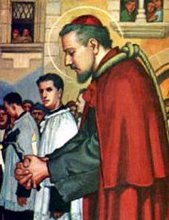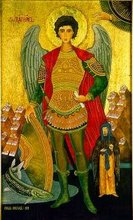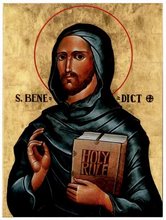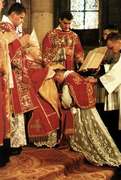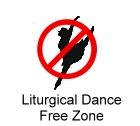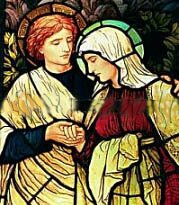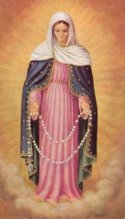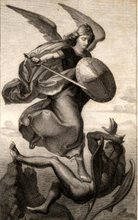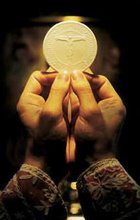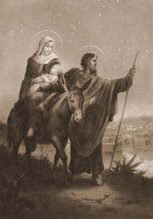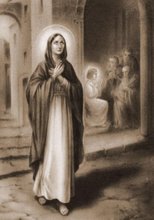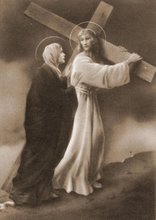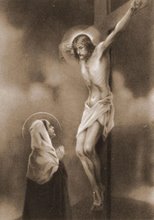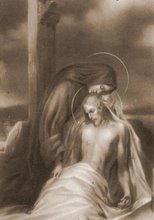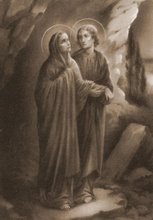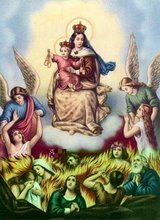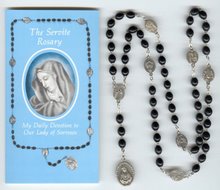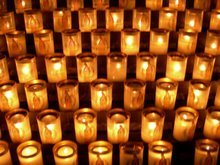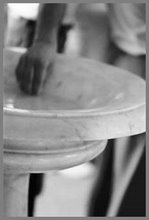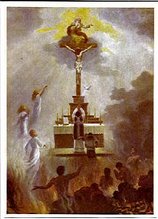A kind gentlemen sent me a book called "Servants of Mary" which is a reprint (with permission) of the Servite Manual which is a treasure for those with a devotion to the sorrows of Mary. Most readers of this blog will be acquainted with Office prayers of the church. I used to pray the Little Office of the Blessed Virgin Mary but fell away from the practice. In the Servite Manual there is published a little known "Little Office of our Lady of Seven Dolors" This is posted below:
Matins
First Dolor - The Prophecy of Simeon
Hail Mary...
V. O Lord, open Thou my lips. R. And my mouth shall declare Thy praise.
V. O God, come unto mine aid. R. O Lord, make haste to help me.
Glory be to the Father, and to the Son and to the Holy Ghost. As it was in the beginning, is now, and ever shall be, world without end. Amen. Alleluia.
From Septuagesima to Easter, instead of Alleluia, is said:
Praise be to Thee, O Lord, King of everlasting glory.
Hymn
HAIL to Thee, Christ's Mother dearest,
Who, by sad prophetic word,
In the sacred temple hearest
Of the keen heart -piercing sword,
Make me mindful of Thy sorrow,
Guard me, that, the valley past,
I may, in the eternal morrow,
Give Thee thanks in heaven at last.
Antiphon: LAM ii. 13: To what shall I compare thee, or to what shall I liken thee, O daughter of Jerusalem? To what shall I equal thee, that I may comfort thee, O virgin daughter of Sion? For great as the sea is thy destruction.
V. Thine own soul a sword shall pierce.
R. That out of many hearts thoughts may be revealed.
Let us pray
O Lord Jesus Christ, we beseech Thee that the blessed Virgin Mary, Thy Mother,whose most holy soul was pierced by the sword of sorrow in the hour of Thy Passion, may appeal for us to Thy clemency, now and at the hour of our death. Through Thee, Jesus Christ, Saviour of the world, who with the Father and the Holy Ghost, livest and reignest, world without end. Amen+
PRIME
Second Dolor - The Flight into Egypt
Hail Mary...
V. O God, come unto mine aid. R. O Lord, make haste to help me.
V. Glory Be... R. As it was in the beginning, etc. Alleluia or Praise be to Thee, O Lord, King of everlasting glory.
Hymn
HAIL, thou Christ's sweet Mother, flying
From an angry tyrant's hand,
In thy heart's deep sorrow sighing,
Banished from thy fatherland.
O thou Queen of blessed spirits,
Exiles never seek in vain;
Safe from evil man inherits
Grant me with thy Son to reign.
Antiphon: LAM i. 20: Behold, O Lord, for I am in distress; my bowels are troubled, my heart in turned within me, for I am full of bitterness: abroad the sword destroyeth, and at home there is death alike.
V. Lord, all my desire is before Thee.
R. And my groaning is not hidden from Thee.
Prayer as above
TERCE
Third dolor - The Loss of the Child Jesus
Hail Mary...
V. O God, come unto mind aid. As above.
Hymn
HAIL, to thee, Christ's Mother sweetest,
When was lost thy Son, thy King,
Thou, with mother's woe completest,
Three days sought Him sorrowing.
Ne'er be this remembrance over,
Let me find thy Son by grace,
And when I have found my lover,
Hold Him in a long embrace.
Antiphon: LAM i. 2: Weeping she hath wept in the night, and her tears are on her cheeks: there is none to comfort her among all them that were dear to her.
V. He hath made me desolate.
R. Wasted with sorrow all the day long.
Prayer as above
SEXT
Fourth dolor - The Meeting of Jesus carrying His cross
Hail Mary...
V. O Lord, come unto mine aid. As above
Hymn
HAIL, Christ's sweetest Mother, looking
While thy Son was led along,
And from cruel hands was brooking
Blows and thorns and torture-thong.
By the pains which ne'er another
Bare as He, may we find peace;
By the love of His dear Mother
Suffering, may our love increase.
Antiphon: LAM i. 9-10: Behold, O Lord, my affliction, because the enemy is lifted up: the enemy hath put out his hand to all her desirable things.
V. Who will give water to my head and a fountain of tears to my eyes?
R. And I will weep day and night.
Prayer as above
NONE
Fifth Dolor - The Crucifixion & Death of Jesus
Hail Mary...
V. O God, come unto mine aid. As above
Hymn
HAIL, Christ's sweetest Mother sighing
'Neath the cross predestined tree,
When thy Son, so sadly dying,
Turned His eyes to look on thee.
By the sword of bitter sorrow,
Which then cleft thy soul in twain,
Grant that I love's might may borrow,
and o'er death the victory gain.
Antiphon: LAM i. 12: O all ye that pass by the way, attend and see if there be any sorrow like unto my sorrow.
V. All they that passed by the way have clapped their hands at thee.
R. They have hissed, and wagged their head at the daughter of Jerusalem.
Prayer as above
VESPERS
Sixth Dolor - Christ's descent from the Cross
Hail Mary...
V. O God, come unto mine aid. As above
Hymn
HAIL, Christ's sweetest Mother, craving
Dead, thy Son, let down fron rood,
In thine arms to bear, and laving
Him with thy tears' holy flood.
May the power of that great anguish,
Mary Mother full of grace,
Keep me, when in death I languish,
Till I se my Saviour's face.
Antiphon: RUTH i. 20: Call me not Noemi (that is, beautiful), but call me Mara (that is, bitter), for the Almighty hath quite filled me with bitterness.
V. A bundle of myrrh is my Beloved to me.
R. He shall abide between my breasts.
Prayer as above
COMPLINE
Seventh Dolor - The Burial of Jesus
Hail Mary...
V. Convert us, O God our Saviour.
R. And turn off Thine anger from us.
V. O God, come unto mine aid. As above
Hymn
HAIL, Christ's sweetest Mother, weeping
Jesus hidden in the tomb,
Done to death and lowly sleeping,
Thou dost mourn His early doom.
By the might of anguished hours,
Suffered with a constant heart,
'Gainst the force of evil powers,
Help us bear a manly part;
Till with Saints on heavenly towers
We may join thee where thou art.
Antiphon: LAM i. 16: Therefore do I weep, and my eyes run down with water, because the Comforter, the relief of my soul, is far from me.
V. My eyes have failed with weeping.
R. My bowels are troubled.
Prayer as above
Offering
To thee, O Blessed Virgin, I recite
Prayers that are fitting for each holy rite;
May'st thou with loving mother's heart by nigh
To be my help, what time I come to die. Amen+












































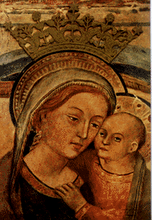
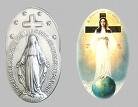

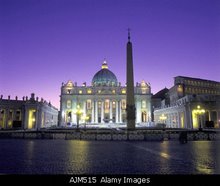

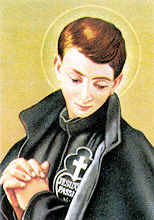
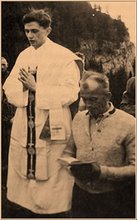
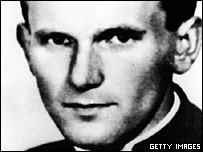
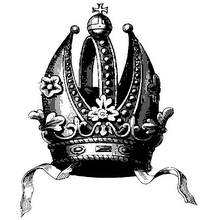
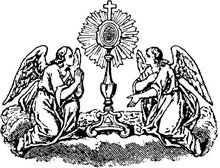
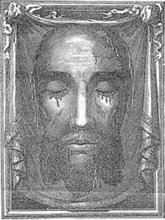


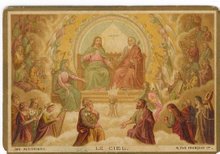

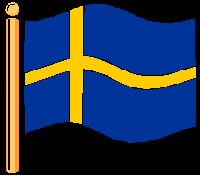


01.jpg)


